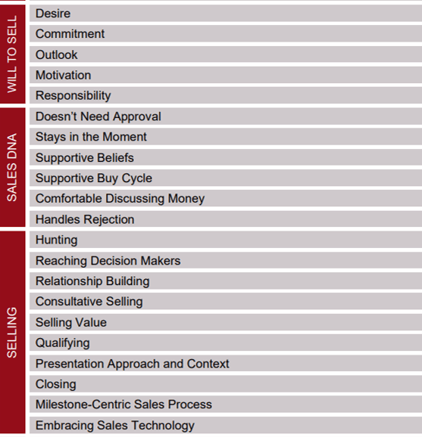There are three core sales competencies indicative of a salesperson who will set stretch goals and create an action to reach those goals.
However, identifying and establishing personal goals, as well as following an 8 step process, is critical to creating an effective sales action plan.

At the beginning of our goal-setting sales training, we always start with this: What would you attempt to do if you knew you could not fail? This is a great question to kick off the thought process and discussion around establishing goals which are the basis for creating a sales action plan. Think about those on your team whom you know you can rely on to establish their goals, do the activity necessary and bring in the results. What skills and characteristics do they have? There are a couple of findings from the Objective Management Group sales evaluation that are indicative of a salesperson who will set stretch goals and create an action to reach those goals. Here are three of those core sales competencies:
- An action-oriented and successful salesperson will always take responsibility for their efforts and their results. They will not blame the company, the market, or anything else if they do not reach their goals. They take ownership and will address the problem with a statement such as “I did not do the activity needed to reach…” While responsibility can be taught, you should be on the lookout for this quality when you interview new candidates.
- Goal and action-oriented salespeople enjoy selling. That may seem obvious however there are plenty of sales folks who do not score that well in this finding. If you enjoy selling, you are more likely to naturally do what it takes; the hard work of calling prospects, getting plenty of rejection, not letting it get you down, and getting back on the phone. The enjoyment of selling helps these salespeople create and live their sales action plans and they have fun doing it!
- Successful salespeople establish personal goals (different from company goals) and they are meaningful goals like a safari next June or a vacation house on the lake. These salespeople also have a plan to reach their personal goals with activities, a timeline, and a system to track their progress. Usually, their goals are non-negotiable, however, their plan to reach them may shift as needed. The OMG evaluation identifies these traits and you need to know these when you are hiring.
Sales Action Plan Ideas
“You do not decide your future. You decide your habits and your habits decide your future”- F.M. Alexander. This post is about how to make an action plan for sales but just a few comments about the goal-setting process. We recommend starting with way too many goals, in fact around 100, so that you think broad and deep and expand your thinking. Then categorize those 100 goals into types such as personal, business, spiritual, wellness, etc. After, boil them down to the top 12 non-negotiable goals with details and timelines, and don’t forget to set your BHAG (big, hairy, aggressive goal). This is the one goal that is really shooting for the stars. If you want to know more about the goal-setting process for your company or personal purposes, reach out and we will share the Extraordinary Goal Setting Process.
Here are the 8 steps for your Sales Action Plan:
- Establish your personal goals
- Create a Success Formula for new business
- Determine your key initiatives
- Establish your Smart numbers – your key measurements for success
- Figure out what you should Start and Stop Doing
- Create your sales & marketing plan
- Review, respond and redirect as needed
- Don’t forget to celebrate your success!
For more details on this approach, you can download our Sales Action Plan template today and get started. Remember, the best time to plant a tree is today so get started now growing your sales action plan and results.






.jpg?width=3000&name=adult-american-analyzing-1059111%20(1).jpg)



